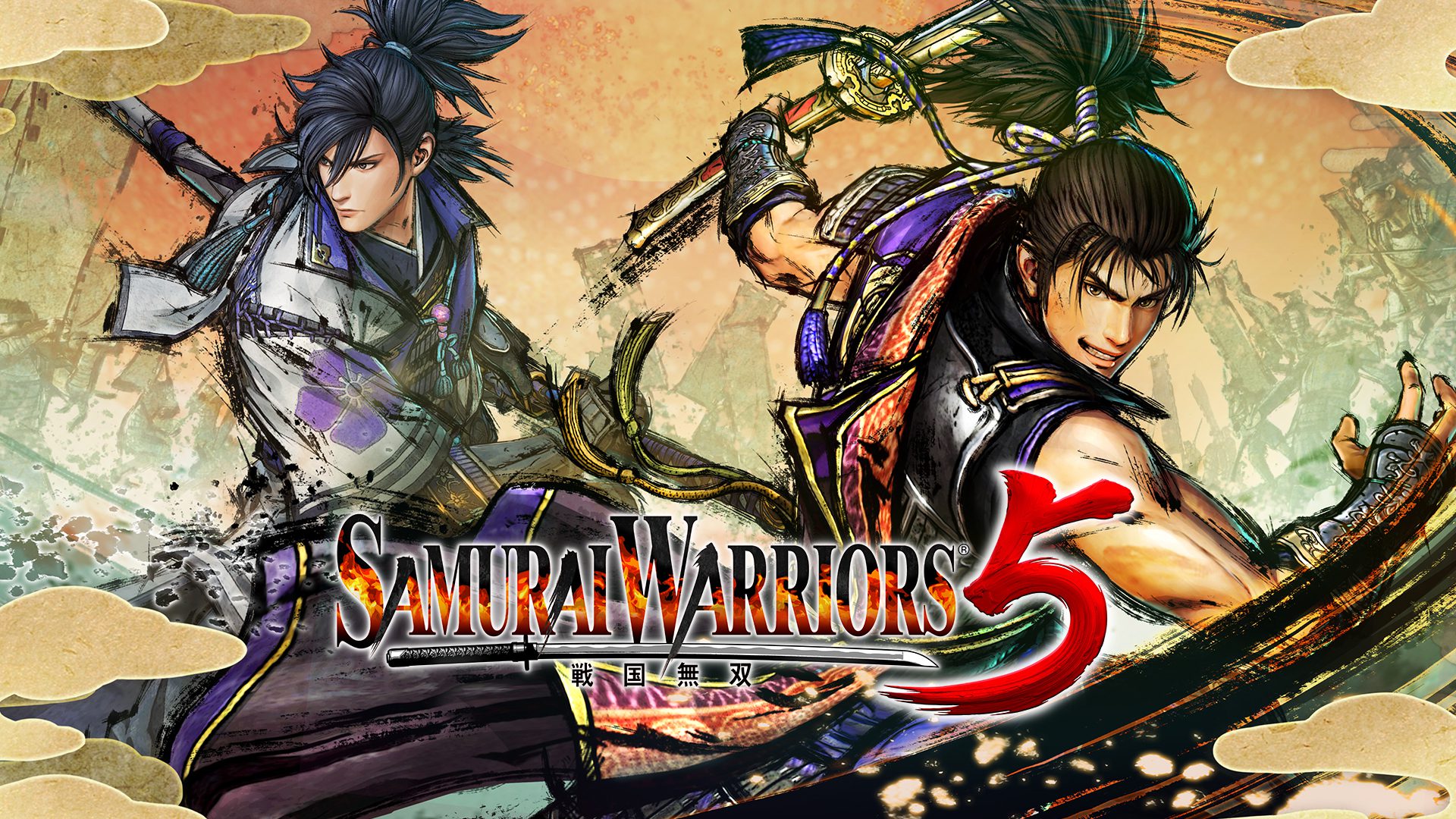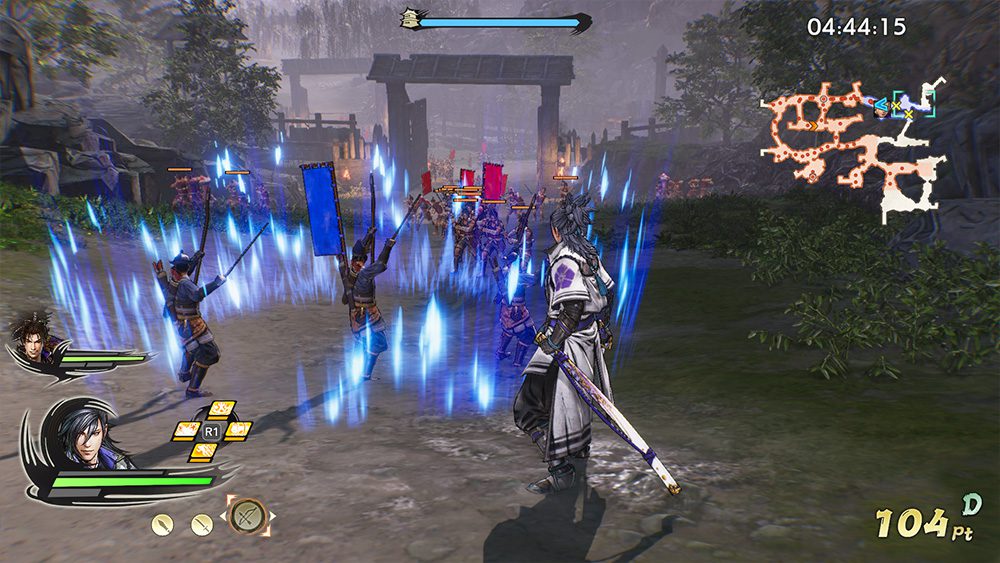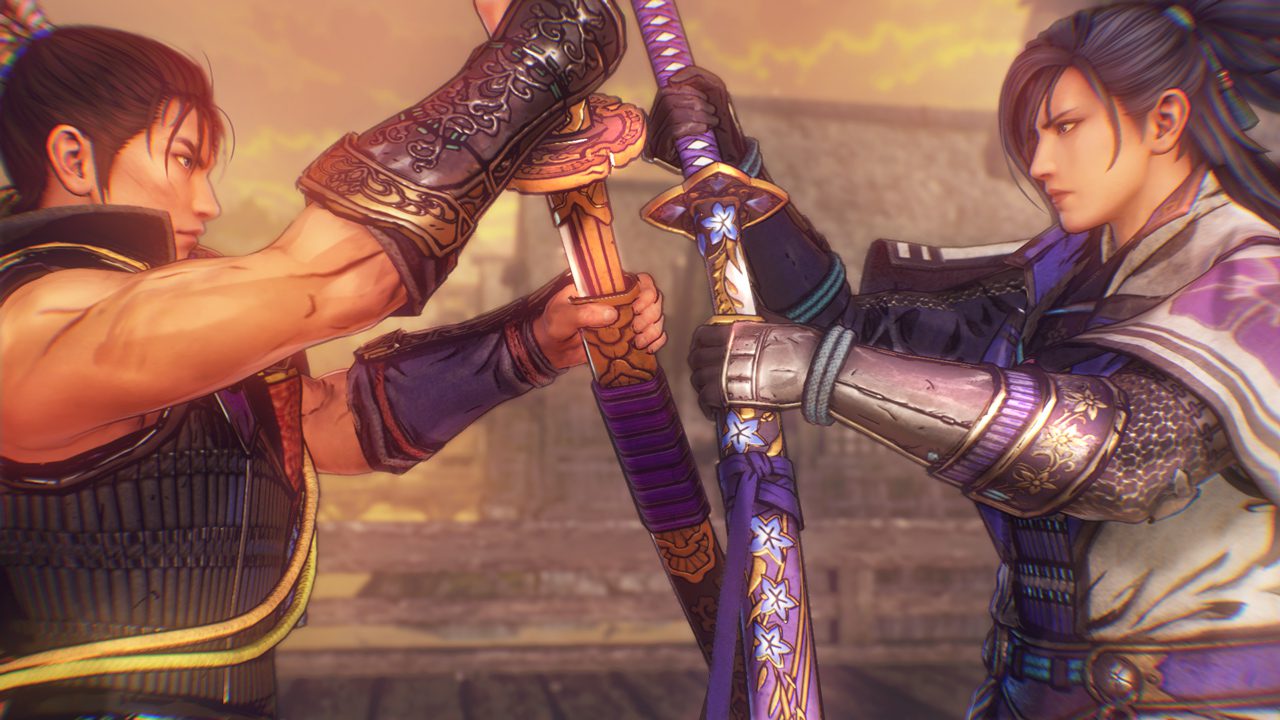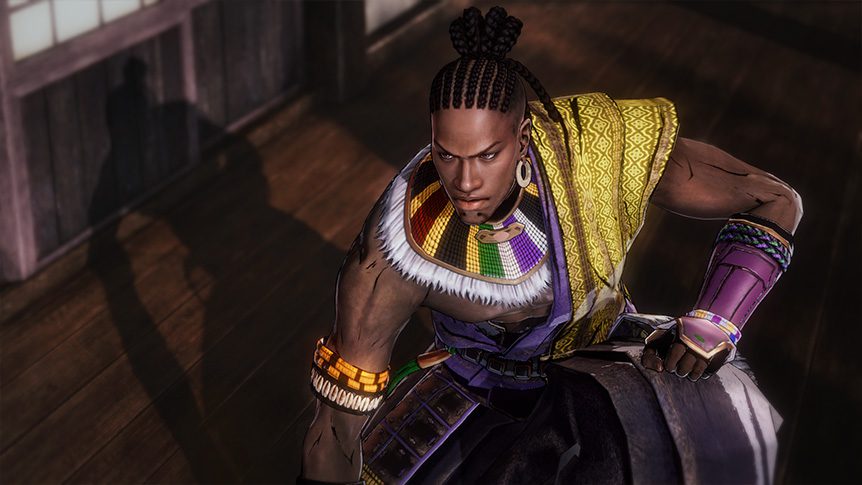Samurai Warriors was the very first spin-off of Koei Tecmo’s long running hack-and-slash series Dynasty Warriors and has been running parallel to its older brother ever since. Rather than adapting the Chinese Romance of the Three Kingdoms like in Dynasty Warriors, Samurai Warriors tells the story of Japan’s unification during the Sengoku Era. My knowledge of Japan’s history is somewhat limited compared to other places in the world, but I think I know enough to provide at least a little substantive commentary. Specifically I’ll be tackling the latest game in the series, 2021’s Samurai Warriors 5.

Samurai Warriors 5 follows the Warriors game formula very closely as far as the gameplay is concerned. Players must navigate a chaotic battlefield completing mission objectives while crushing all enemy soldiers that stand in their way. Common foot soldiers are incredibly weak and will fall by the dozens against the player’s offensive onslaught. Officer units on the other hand actually put up a bit of resistance when they encounter the player so learning to block, dodge, and parry their attacks is rather useful. At the end of each stage the player is rewarded based on their performance in the battle and given resources to upgrade their characters as needed.
The most unique addition to Samurai Warriors compared to most other Warriors games I’ve played is the Hyper Attack, a series of advancing strikes performed by repeatedly pressing the Heavy Attack button. Its primary use is to tear through mobs of foot soldiers in between objectives which greatly reduces the amount of time spent traveling from point A to point B. Another notable addition is Ultimate Skills which are a set of 4 powerful actions that can be equipped for devastating special attacks and temporary buffs, but at the cost of having a cooldown period in between uses. This system is very similar to the Active Skills from Fate/Extella LINK, a Warriors-esque game I reviewed last year, and it works just as well here as it did there.
There are other ways of customizing your characters beyond Ultimate Skills as well, chief among them being the game’s weapons. A player’s equipped weapon will define what moveset their character has in combat and each weapon will have different strengths and weaknesses. That being said, every character has at least one preferred weapon type that will grant them unique attacks so there’s a decision to be made when choosing between weapons that the player is comfortable using versus weapons that bring out the character’s strengths. Additionally, every character has a unique skill tree the player can use to unlock passive perks that go beyond the simple stat bonuses gained by leveling up such as adding bars to the character’s super attack gauge or unlocking more Ultimate Skills.
Overall Samurai Warriors 5 feels very good in comparison to many other Warriors games, allowing players to experience the fantasy of being an unstoppable one man army. That being said in the broader pantheon of hack-and-slash games it suffers from many of the same issues as its predecessors. The Warriors formula is very repetitive and not particularly challenging so it can be fun in short bursts, but over an extended period of playtime it can start to feel pretty hollow. Additionally, the game is pretty bare bones in terms of game modes. The only thing to do outside of the story mode is Citadel Mode, a series of short, semi-randomized, defensive battles where the player protects their base from enemies and gains materials to upgrade the facilities used to improve their army. While the rewards for playing this mode are pretty good, Citadel Mode is not on par with the traditional levels found in story mode.

Go forth minions!
The visuals of Samurai Warriors 5 take on a cartoonish cel shaded art style with bright colors and flashy animations. It’s not a particularly innovative style, but it looks good for what it is. The biggest flaw on the visual front is that on the more intense stages, large numbers of enemies and background effects cause a lot of pop-in where objects take longer to load into the game world than they should. Another smaller complaint I have is with the visual continuity of the game’s characters within a time skip that happens in the story. At the beginning of the game most of the characters look very young or even teenaged, but after the time skip the main characters receive more mature looks. The supporting cast however, does not receive a similar aging up and it looks incredibly awkward.
In terms of the sound of the game, the music uses rock and roll mixed with traditional Japanese instruments to complement the fast-paced action and the historical setting simultaneously. The end result is one heck of head-baging soundtrack, although it often gets lost behind chaotic action. I also thought the game’s voice acting was rather campy which might turn some people off, but in fairness it does fit the tone of the game’s story so I won’t be overly critical about it.
Speaking of story, grab yourself a snack because the lion’s share of this review starts now. Before I dive too deep into the details let’s make something very clear about Samurai Warriors 5, though the game takes place during the Sengoku Era and follows the stories of real people it is not a very historically accurate depiction of either. Most of the game’s characters have personalities designed to fit certain tropes rather than the historical people they’re attached to and while the plot might get most of the broader strokes of the history right the individual events are often changed to hit particular narrative beats. The consequences of this approach are literally personified in the character of Mitsuki, a completely fictional character who exists to fulfill a rather cliche subplot about Nobunaga having a long lost niece.
Rather than telling the entire history of the Sengoku Era, Samurai Warriors 5 focuses the events of the story on the lives of two particular characters. The main protagonist is Nobunaga Oda, the first of Japan’s 3 Great Unifiers. The secondary protagonist is Mitsuhide Akechi, a samurai general who would ultimately betray and kill Nobunaga. In theory this setup could have worked really well if the game presented both characters with different virtues and vices and left the player to decide who is the hero and who is the villain or if such a distinction can even be made in the first place. Instead the game bends over backwards to make both Nobunaga and Mitsuhide fundamentally good and noble characters even at their lowest points, which becomes very frustrating very quickly.

Samurai fist-bump.
For example early on in Nobunaga’s career there was a succession crisis within the Oda clan between Nobunaga and his younger brother Nobuyuki. Nobunaga would ultimately emerge the victor after a hefty amount of convoluted political intrigue, the details of which I will spare you from for the sake of brevity, and forced his brother to commit seppuku (ritual suicide). This episode of fratricide is at best Nobunaga acting pragmatically to preserve his rightful place as leader of the Oda clan and at worst a testament to his capacity for brutality as a warlord. In Samurai Warriors 5 on the other hand, Nobunaga is portrayed as not wanting to kill his younger brother, but Nobuyuki reveals he was secretly on Nobunaga’s side the whole time and wants to be killed so that the dissenters won’t have anyone left to rally around. This version of events is incredibly contrived and so obviously constructed to make Nobunaga look better than he otherwise should.
Mitsuhide is a bit tricker to pin down historically as most sources are considered too biased to be accurate records of the man’s character and motivations, leading to lots of wild speculation on the reason why he betrayed Nobunaga. It should come as no surprise then that Samurai Warriors 5’s theory is very similar to the confrontation between Nobunaga and Nobuyuki and just as silly if not more so. If this game is to be believed, Nobunaga knew that as he got closer to unifying Japan his infamy as a warlord would make him the living embodiment of Sengoku Era brutality. Nobunaga intentionally plays up his reputation as “The Demon King” to push Mitsuhide into resenting him so that one day Mitsuhide would rise up and kill him, symbolically destroying the reign of chaos over Japan. Bottom-line is the game’s dedication to making sure everyone can still be considered a hero by the end of the story breaks whatever immersion I might have had due to how blatantly artificial it all felt.
Beyond the main story there are also a few side missions starring other characters to flesh out the bigger picture of the Sengoku Era. The most common of these side missions are simply battles the player has already been through from the perspective of the other side. This can be a mildly interesting experience, though it is held back by how redundant it is to replay the same level a second time. The best side missions follow supporting characters fighting battles not present in the main campaign, often concerning Hideyoshi Hashiba and Ieyasu Tokugawa who are the second and third Great Unifiers respectively. These battles still suffer the same problem of making their protagonists a bit too heroic compared to their historical counterparts, but for the sake of time let’s skip over the refresher.
Last, but certainly not least, there is the matter of Samurai Warriors 5’s connections to Catholicism which is important since the religion was first brought to Japan during the Sengoku Period by St. Francis Xavier. Unfortunately the game only acknowledges this event as background context for the character of Yasuke. Yasuke was an African who came to Japan in the service of an Italian Jesuit missionary named Alessandro Valignano (possibly as a slave, but we don’t know for sure). Nobunaga was fascinated by this tall, well-mannered, dark-skinned foreigner and hired Yasuke as a retainer. Some claim Yasuke was made an honorary samurai by Nobunaga and fought at the battle of Honnoji, others say he served as a weapons bearer or other non-combatant role, but in reality there is so little documentation of Yasuke that we will probably never have a definitive answer.

A true man serves others with strength and humility.
While Yasuke is a very interesting historical character, his inclusion alone does not do justice to the role of Catholicism in the Sengoku Era. As part of a trade agreement with Portugal, Nobunaga allowed Catholic missionaries to evangelize in Japan primarily in exchange for guns which quickly became one of Nobunaga’s greatest military assets. Without the opportunities for trade that Catholic missionaries opened up there’s a good chance Nobunaga would not have been able to conquer as much of Japan as he did. Mitsuhide has a significant connection to Catholicism as well through his daughter, Gracia Hosokawa. Gracia was kept under house arrest by her husband, Tadaoki Hosokawa, after being branded a traitor’s daughter, but word of the Catholic faith managed to penetrate her isolation and she was baptized in secret despite the threat of persecution. Gracia was ultimately killed by her husband’s retainers to prevent her from being kidnapped and used as a hostage, but her extraordinary piety remains a shining example to Japanese Catholics who celebrate her as a hero to this very day.
Furthermore, many of Samurai Warriors 5’s generic officer units are named after historical samurai, but since there can only be so many playable characters they are not given much, if any, context in the story. Obviously this means otherwise important figures end up getting the short end of the stick, including prominent Catholic samurai. When I came across an officer with the name “Ukon Takayama” I was ecstatic that I had found a reference to Blessed Justo Takayama, the greatest of all Catholic samurai who is very close to being canonized a Saint, but also disappointed that the game didn’t recognize the significance of his inclusion. I can only hope that future Samurai Warriors games or other games set in the Sengoku Era will do more justice to the role of Japanese Catholics in this critical moment of Japan’s history.
At the end of the day, Samurai Warriors 5 is among the better Warriors games I’ve played, but it also reminded me of the many flaws inherent in the subgenre. The one man army action is fun, but often lacks a sufficient challenge. Presentation wise it has a lot of style, but struggles under the weight of having to process so many pieces all at once. It also wouldn’t be a Homs review if I didn’t complain about a game’s historical setting being squandered by ahistorical anime hijinks. I would not recommend Samurai Warriors 5 if you’re looking for a substantive action game, but if you’re looking for something easy to pick up and play on a bad day you might get something out of it.
Scoring: 64%
Gameplay: 3/5
Visuals: 3/5
Sound: 4/5
Story: 2/5
Replayability: 4/5
Morality & Parental Warnings: Samurai Warriors 5 is an action game where characters battle against massive armies using a wide variety of weapons from blades to bludgeons to firearms and other projectile weapons. Despite the emphasis on violence, the game does not feature any blood or gore. Some of the more abstract weapons such as the Drum or the Talisman are akin to wielding magic powers, but the abilities themselves are fairly standard video game fare that lack any sort of realistic rituals or incantations. Some characters wear immodest clothing, especially the female characters. The story has several instances of seppuku, a traditional Japanese form of ritual suicide practiced by the warrior class, but is often done in such away to censor the gruesome details. Mild language is used throughout the story.
